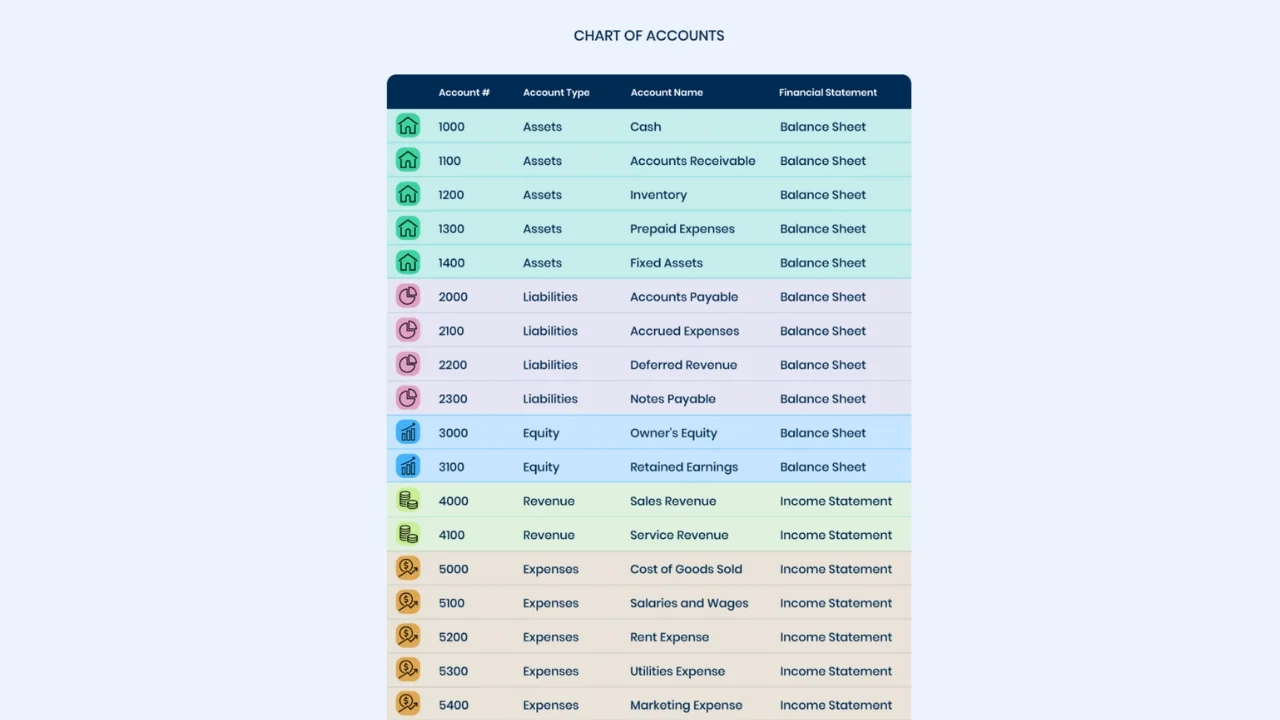A well-structured financial framework is essential for the success of any business. The Chart of Accounts (COA) acts as the cornerstone of this framework, offering a precise and comprehensive structure for documenting all financial activities. However, there is no unified chart of accounts. It varies from industry to industry, business to business. I have also created a chart of accounts template that covers the main categories. You can initially use this chart of accounts template for your business.
Sample Chart of Accounts Template
I have developed a sample chart of accounts template that provides a starting point with main categories and subcategories. Remember, you can customize this further based on your specific business needs.
1. Assets
- 1000 Current Assets
1010 Cash and Cash Equivalents
1020 Accounts Receivable
1030 Inventory
1040 Prepaid Expenses
(Add other relevant current asset accounts)
- 1100 Non-Current Assets
1101 Land
1102 Buildings
1103 Equipment
1104 Furniture and Fixtures
1105 Vehicles
1106 Patents
1107 Trademarks
1201 Less: Accumulated Depreciation (for depreciable assets)
(Add other relevant non-current asset accounts)
2. Liabilities
- 2000 Current Liabilities
2010 Accounts Payable
2020 Salaries and Wages Payable
2030 Income Taxes Payable
2040 Short-Term Loans Payable
(Add other relevant current liability accounts)
- 2100 Non-Current Liabilities
2101 Long-Term Loans Payable
2102 Mortgages Payable
(Add other relevant non-current liability accounts)
3. Equity
- 3000 Owner’s Equity
3010 Capital Stock (for corporations)
3020 Retained Earnings
3030 Dividends
3040 Owner’s Drawings (for sole proprietorships)
4. Revenue
- 4000 Sales
4010 Sales Revenue
4020 Service Income
(Add other relevant revenue streams)
5. Expenses
- 5000 Cost of Goods Sold (for product-based businesses)
5010 Direct Materials
5020 Direct Labor
5030 Manufacturing Overhead
- 5100 Selling Expenses
5110 Advertising Expense
5120 Sales Commissions
(Add other relevant selling expenses)
- 5200 General and Administrative (G&A) Expenses
5210 Rent Expense
5220 Office Supplies Expense
5230 Salaries and Wages Expense (indirect labor)
5240 Utilities Expense
(Add other relevant G&A expenses)
- 5300 Non-operating Expenses
5310 Interest Expense
5320 Depreciation Expense
(Add other relevant non-operating expenses)
Download Sample Chart of Accounts PDF File
Download Sample Chart of Accounts Excel File
Bottom Line
By understanding the components of a COA and following the steps to create a customized template, you can enhance your business’s financial organization and decision-making capabilities. Read this article about How to Create, Categories for the Chart of Accounts.


Leave a Reply